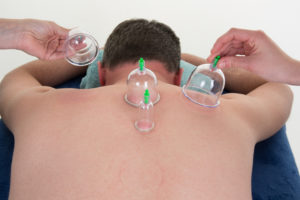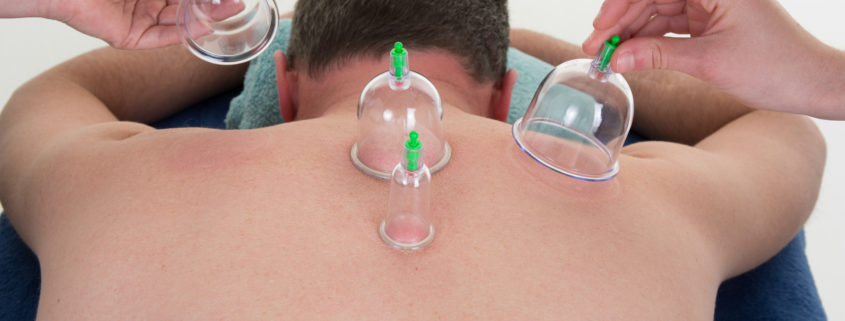How Cupping Can Help Your Performance
By Brian Diaz, MPT, CSCS
What are all those hickies on Olympic athletes?
Many of you watched the Olympics this summer and couldn’t help but notice the discolored or bruised circles that were showing up on the likes of Michael Phelps and Alex Naddour (like the photos here). Their shoulders, back, and chest were covered with hicky-like marks.
These marks, although painful looking, are actually helpful. They are the result of a type of therapy called cupping that has been used for decades. Only recently has it gained public notoriety with the visible application to many Olympic athletes. And just in case your were wondering, you don’t have to get the intense bruising to enjoy the benefits of cupping.
What is Cupping?
Cupping, or myofascial decompression (MFD), is a type of deep tissue therapy. Unlike deep tissue massage, which applies a positive pressure (aka pushing downwards) to the tissues, cupping applies a negative pressure (aka pulling upwards) to the skin. The blood rushes into those trigger points and comes all the way to the surface of the skin, bringing oxygen and nutrients to tight areas. The vacuum formed by the cup’s suction lifts and separates scar tissue and adhesions in the muscles, fascia, and other connective tissue, reducing pain and discomfort.
How Does Cupping Work?
Cupping is commonly used on hamstrings, calves, and hip flexors for runners and cyclists as well as shoulder and back stabilizers for swimmers. Our skilled practitioners will have you move the muscle and apply the suction at the point of restriction. There is a light lubricant used so the PT can move the cup around slowly. Many athletes report a “popping” sensation as the cup moves over adhesions. Usually range of motion is immediately restored.
Is Cupping Just a Fad?
Are you still skeptical? Derived from traditional Chinese medicine, cupping is definitely here to stay. It’s obviously difficult to study in a true double-blind study fashion. But there is research comparing cupping with other treatment groups who did foam rolling and more traditional deep tissue (positive pressure) massage. All the groups made progress and reported improvement in their symptoms regardless of treatment with the biggest improvement made in the group that had them all done.
Pick a PT or Massage Therapist with a Broad Skill Set
Cupping is another tool for PTs (like Brian) and skilled massage therapists (like Sheri) to treat athletes. Similar to instrument-assisted massage or dry needling, if symptoms are improved, range of motion is restored, and ultimately recovery is faster and performance increases, then cupping is an excellent treatment method for athletes.
Schedule an appointment with Brian here or Sheri here to see if cupping is a modality that might fit your needs.




